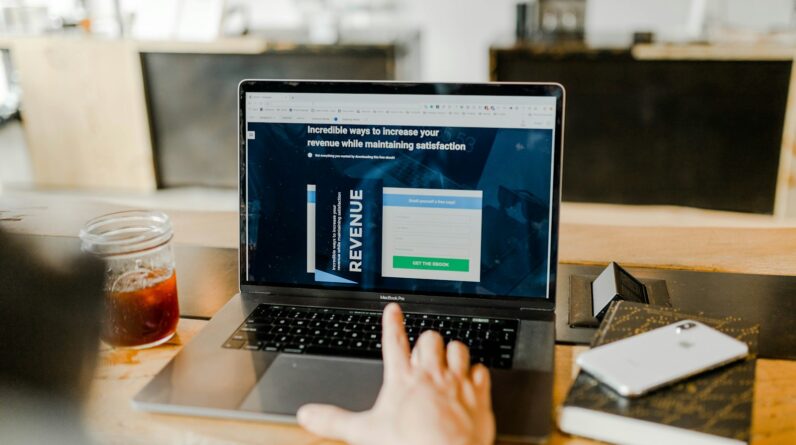
Hey, Friends! Let's Chat About Making Money with Pinterest!
So, you've heard about affiliate marketing, right? It's a cool way to earn cash by sharing products you love. You tell your friends about something, they buy it, and you get paid. It's like being a part of a super fun shopping club. Now, imagine using a super colorful, picture-filled place like Pinterest to help you do this. Sounds pretty awesome, doesn't it?
First Things First: What's Pinterest?
Picture this: A giant, never-ending wall full of your favorite pictures. You've got your best cookie recipes, dream travel spots, and even those shoes you've been eyeing. This magical place is Pinterest. It's a website full of pictures that link to cool stuff on the internet. People use it to plan their weddings, decorate their homes, and find tasty recipes.
Pinterest + Affiliate Marketing = Money!
Now, what if I told you that you can make money by pinning stuff? Yep, it's true! This is where affiliate marketing comes in. You share a picture with a special link. When someone clicks your link and buys the thing, you get a piece of the pie. So, if you love finding and sharing nifty things, why not earn something for your effort?
Step 1: Get Your Affiliate Links Ready
Before you start, you need what's called an “affiliate link.” This is a special link that tracks who clicked and bought something because of you. You can get these links by signing up for affiliate programs. Look for ones that have stuff you really like because it's easier to talk about products you believe in.
Step 2: Create A Pinterest Account That Rocks
If you want to be a Pinterest pro, make sure you have a cool-looking account. Put a nice picture of yourself and write a little about who you are. This helps people to trust you. Then, make a bunch of boards for your pins. Organize them by topics like “Yummy Foods,” “Fashion Finds,” or “Home Sweet Home.”
Step 3: Pin with Power
Now, the fun part: Pinning! Don't just throw any old picture up there. Find really pretty ones that make people go “Wow!” You can use pictures from the affiliate product's site, but read the rules first! Some folks don't like it when you use their photos. Add your affiliate link to your pin and write a little note telling folks why they'd love this product.
Step 4: Keep Your Friends in the Loop
When you pin something cool, tell your friends! Pinterest lets you share pins on Facebook and Twitter, too. The more you share, the more people see your pins, and the more chances you have to make a sale. It's like telling your friends about a great movie you saw. But this time, you get a little extra thank-you money when they get their tickets because of you.
Step 5: Be Friendly and Real
No one likes a pushy salesperson. So, when you talk about your affiliate products, be friendly and real. Talk about why you really like them and how they've helped or made you happy. Share your own stories. Like how that kitchen gadget made cooking so much easier, or how that backpack didn't hurt your back even when it was full.
Step 6: Keep an Eye on What Works
Some things work better than others. Maybe people love your travel pins but don't care much about the shoes. That's okay. Pay attention to what your followers like. If they're crazy about the vegan cookies you pinned, find more yummy vegan treats to share! It's all about learning as you go.
Stay Cool, Keep Pinning
Let's wrap it up: Pinterest is not just for fun pictures. It's a cool tool for making money with affiliate marketing. Find products you dig, get those affiliate links, and start pinning. Be cool, stay real, and keep your friends in the know. Remember, sharing is caring, and in this case, sharing can also mean earning. Happy pinning, and here's to making your affiliate marketing adventure a big hit!
What are the first steps to take when using Pinterest for affiliate marketing?
Start by setting up a business account on Pinterest. This gives you access to analytics and ad tools you don't get with a personal account. Create boards relevant to your niche and populate them with pins that link back to your affiliate products, ensuring that they're high-quality and visually appealing.
Next, join group boards with a high follower count to increase your reach. Always remember to read the group rules, as some prohibit affiliate links. Tailor your pins to each group board's theme for the best engagement, and don't forget to include keywords in your pin descriptions for better discoverability.
How can you create affiliate pins that attract clicks on Pinterest?
For your affiliate pins to get noticed, use bright, clear images that showcase the product effectively. Add text overlays with compelling calls-to-action like “Shop Now” or “Grab the Deal”. Keep it short and sweet. Your descriptions should provide value, include keywords for SEO, and tease what users will get by clicking the pin.
Furthermore, ensuring your pin's vertical layout is optimized for Pinterest's format can increase visibility. Long, impactful images stand out more in the feed. Use tools like Canva for design templates that are eye-catching. Always check the destination link works and the product is available, as broken links can hurt your credibility.
Can you automate pinning on Pinterest, and is it beneficial for affiliate marketers?
Yes, automation can be a game-changer for affiliate marketers. Tools like Tailwind allow you to schedule pins at optimal times when your audience is most active, increasing visibility. This maintains a consistent presence on the platform without having to pin live every day, saving you time and effort.
However, balance is key. Mix automated pins with real-time engagement. Comment on other pins, join conversations, and pin others' content, too. This shows you're not just there to sell but are also part of the community. It builds trust, which is crucial for successful affiliate marketing on Pinterest.
Are there affiliate marketing strategies specific to Pinterest?
A unique strategy for Pinterest is leveraging rich pins, which sync information from your website to your pins. They're essential for keeping pricing and product descriptions up to date. Pin consistently and use Pinterest's analytics to figure out what works best. Try creating multiple pin designs for the same product to see which resonates more with your audience.
Another tactic is to focus on seasonal content. Pinterest users often plan for holidays and events in advance. Tailoring your content to these can tap into the increased search traffic. For example, pinning gift ideas before Christmas or costume ideas before Halloween can place your affiliate products right in the users' planning process.
How do you stay compliant with Pinterest's guidelines while affiliate marketing?
Pinterest has rules on how you should handle affiliate links. Always disclose that your pins contain affiliate links. Transparency is not only required by Pinterest but also builds trust with your audience. Ensure that your content provides value and isn't spammy. Following Pinterest's best practices for pin creation and engagement is also crucial.
Be sure to regularly review Pinterest's policy updates, as they can change. Avoid cloaking affiliate links or using shorteners that obscure the link's destination. Pinterest might block these, which can hinder your affiliate marketing efforts. Remember, being upfront and honest is the best way to engage your audience and abide by the guidelines.
Key Takeaways
- Optimize Pinterest profiles with relevant keywords in the bio and board descriptions to attract your target audience.
- Create visually appealing pins using high-quality images and engaging design to capture attention and drive clicks to affiliate links.
- Use rich pins, which provide more context about an idea by showing extra information directly on a pin, to enhance visibility and engagement.
- Include a clear and compelling call-to-action in pin descriptions to encourage users to click through affiliate links.
- Curate a mix of original content and repins to maintain a dynamic and interactive profile, keeping followers engaged and attracting new ones.
- Leverage Pinterest Analytics to track which pins and boards are the most popular and use this data to refine your pinning strategy.
- Join group boards in your niche to get your pins in front of a larger, engaged community, increasing the potential for clicks on affiliate links.
- Consistency is key; regularly pinning increases the chances of your content being seen and can lead to sustained growth in affiliate marketing successes.
- Stay updated with Pinterest trends and seasonal content to align your affiliate marketing promotions with what users are currently interested in.
Final Thoughts
So, you're armed with all the Pinterest know-how to boost your affiliate game. Remember, it’s all about those eye-catching pins. They’ve gotta pop to stop the scroll and get those clicks flowing. Keep your content fresh; repin, update, and always stay on top of trends. It’s like your virtual shop window—make it irresistible.
Keywords are your stealthy little assistants—use them wisely in descriptions to play nice with Pinterest’s search engine. Make sure your boards have a theme and vibe that tells a story; this way, your audience knows what to expect. Oh, and let’s not forget about connecting, because it's social media for a reason! Engage, comment, and collaborate to get that pin-and-profit party started.
And don’t just pin and ghost. Analyze what’s working. Those analytics are gold—use 'em to refine your approach. Flexibility is your friend; always be ready to tweak your strategy. Stick with it, stay consistent, and let Pinterest be your secret sauce to affiliate success.







